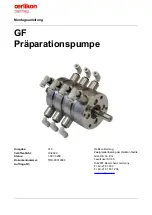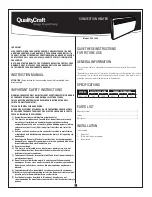
lp-441 Rev. 002 Rel. 008 Date 8.23.18
25
Part 6 - Condensate Removal
NOTE:
Check with your local gas company to determine if
combustion condensate disposal is permitted in your area. In the
state of Massachusetts, condensate must be neutralized before
entering a drain.
This condensing high efficiency water heater has a condensate
removal system. Condensate is water vapor derived from
combustion products, similar to that produced by an automobile
when it is initially started. It is very important that the condensate
line is sloped down away from the heater and to a suitable drain.
If the heater condensate outlet is lower than the drain, you must use
a condensate removal pump (kit p/n 554200 available from HTP).
If required by local authorities, a condensate filter of lime crystals,
marble, or phosphate chips will neutralize slightly acidic condensate
(p/n 7450P-212 available from HTP).
The condensate line must remain unobstructed. If allowed to freeze
in the line or obstructed in any other manner, condensate can exit
from the water heater tee, resulting in potential water damage to
property. When installing a condensate pump, select one approved
for use with condensing heaters and furnaces. The condensate
pump should have an overflow switch to prevent property damage
from spillage. Condensate from the heater will be slightly acidic (pH
from 3.2 to 4.5). Install a neutralizing filter if required by local codes.
Power to the optional condensate pump is continuous. When the
water heater is powered off the condensate pump will remain on.
It is important to remember to turn off the condensate pump when
powering down the water heater. Failure to do so could result in
property damage, severe personal injury, or death.
Figure 15 - Condensate Piping
NOTES:
1. Condensate line must be pitched at least ¼” per foot to properly drain. If this cannot be done, or a very long length of condensate hose
is used, increase the condensate line to a minimum of 1” ID and place a tee in the line after the condensate neutralizer to properly reduce
vacuum lock in the drain line.
2. PVC or CPVC pipe should be the only material used for condensate line. Steel, brass, copper, and other metals will be subject to corrosion
or deterioration.
3. A frozen condensate line could result in a blocked vent condition. It is very important to protect the condensate line from freezing
temperatures or any type of blockage. In installations that may encounter sustained freezing conditions, the use of heat tape is recommended
to avoid freezing of the condensate line. It is also recommended to bush up the condensate line size to 1” and terminate condensate discharge
as close to the unit as possible. Longer condensate runs are more prone to freezing. Damages due to frozen or blocked condensate lines ARE
NOT covered by warranty.
4. Support of the condensate line may be necessary to avoid blockage of the condensate flow.
















































